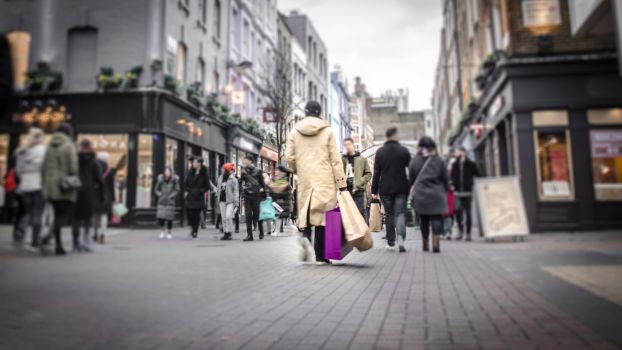
As it turns out, when the population at large are instructed to work from home and shelter in their houses to avoid a global pandemic, that translates into a pretty hefty decrease in footfall for high street stores and retailers.
Sarcasm aside, it’s now starting to look increasingly grim for shopping centres, high streets and other retail outlets as the current economic brakes remain firmly applied.
If we take the Trafford Centre falling into administration in June, after 20 years, as something of a canary in the mine, then it’s a pretty alarming wake-up call for commercial property owners, retailers and store owners.
There was a fairly noticeable, if rather longer-term, decline appearing in high street shopping regardless, but this has now been driven into hyper-speed by the current economic conditions meaning that many consumers simply don’t feel safe heading to crowded shopping centres and stores.
Job losses, closures and administrations have been racking up since the start of lockdown measures in March, and it’s getting increasingly difficult to see how the high street as we know it can ever return post-COVID.
That’s not necessarily a terrible thing, however, and will simply mean renewal in other ways, and a changing of the landscape of city and town centres, but what can we expect?
Residential
As it so happens, online shopping has shot through the roof. That’s not exactly shocking given the introduction of this piece, but it presents the balance to the decline of physical retail.
This, in turn, has meant that there has been a huge re-balancing towards town centres and smaller community areas. Where city centres and large retail parks used to dominate thanks to footfall, smaller town centres are increasingly returning to bustling hubs of activity.
As reported by City A.M, ‘Retail property values are expected to fall up to 40 per cent over the next year due to the impact of the coronavirus pandemic on the UK high street, according to a survey of investors.’
With such a significant decrease in values and activity, the question then becomes what will happen to these properties if, first of all, their values are going to drop so sharply, but secondly, who will occupy them if there aren’t any businesses?
The biggest clue so far has come in the form of what we can already see happening in other parts of the country. City A.M again have been reporting on high streets being converted into more localised leisure businesses such as cafes and bars, but mostly being converted into residential properties.
Across areas in the south east, pubs and other businesses are closing and making way for new residential developments in order to provide protection for investors.
Given the current success of Buy-To-Let in the UK, and especially England, it’s not surprising that investors are now turning to this tried and trusted sector to provide stability and growth. There is plenty of research to also suggest pent-up demand coming to a head for these types of properties.
As the landscape of the country continues to change at a rapid pace, it’s going to become exactly the right time for smart property investors to expand their portfolios all across the country.
